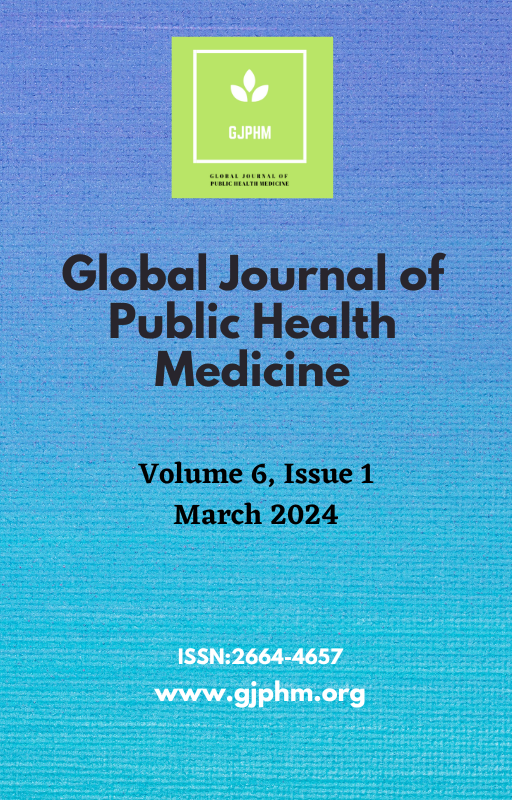OVERVIEW OF LABORATORY DIAGNOSIS OF HUMAN HELICOBACTERIOSIS
DOI:
https://doi.org/10.37557/gjphm.v6i1.242Keywords:
Helicobacter pylori, laboratory diagnosis, advantages, disadvantages, invasive, noninvasive.Abstract
Helicobacter pylori (H.pylori)(HP) is the causative agent of helicobacteriosis. Found often there, it
irritates and inflames the stomach and small intestinal walls. In 2015, an estimated 4.4 billion people
globally carried Helicobacter pylori infections. Adenocarcinoma risk has increased since this bacterium
was originally isolated, suggesting that it may be one of the most prevalent human bacterial infections.
As a result, the World Health Organization (WHO) designated it a Category 1 carcinogen in 1994.
Several assays are available for use in the laboratory for the diagnosis of H. pylori infection from patient
samples. These tests may be broken down into two categories: invasive and non-invasive treatments,
each with its own set of benefits and drawbacks. However, there are limitations to each in terms of
actual clinical use. Clinical context, probability ratio of positive and negative tests, cost-effectiveness
of testing approach, and availability of the test should all factor into the choice of test. Paying close
attention to the positive news about Helicobacter pylori is crucial to reducing the incidence of H. pylori
infection and its associated symptoms. These problems can be avoided altogether if the illness is
caught and treated in time. In this review, we will discuss the methods used to identify
Helicobacteriosis in humans in the laboratory, both invasive and non-invasive.
Downloads
Downloads
Published
Issue
Section
License
Copyright (c) 2024 Dhary Alewy Almashhadany, Marwa Dhari Alewi, Ahlam Taha Mohammed, Mustafa AbdulMonam Zainel

This work is licensed under a Creative Commons Attribution-NonCommercial 4.0 International License.
The authors retain Full copyright of their published article










